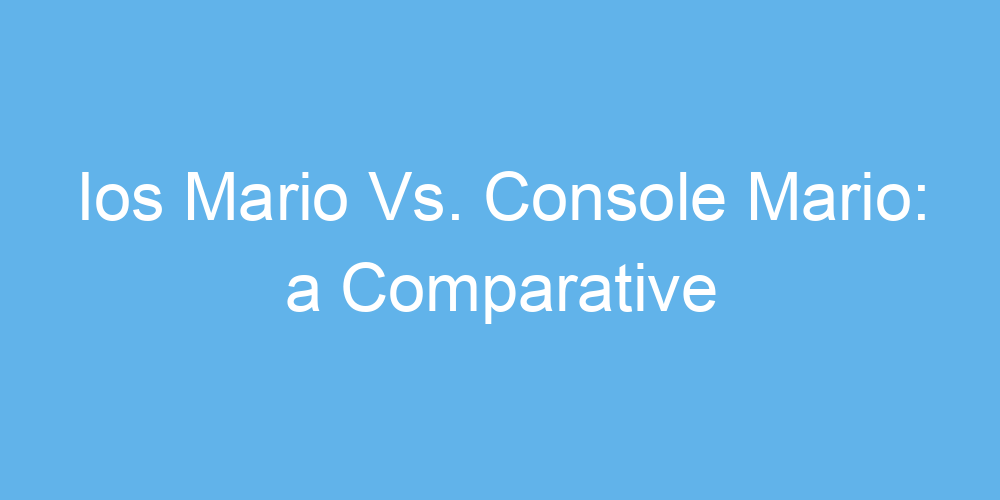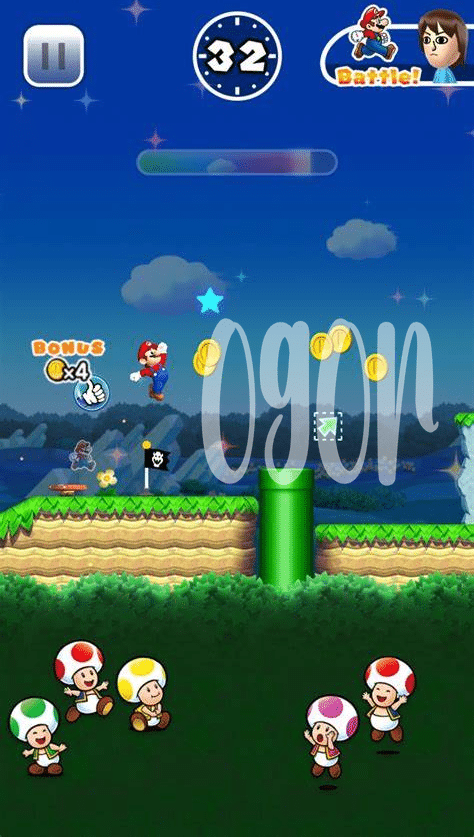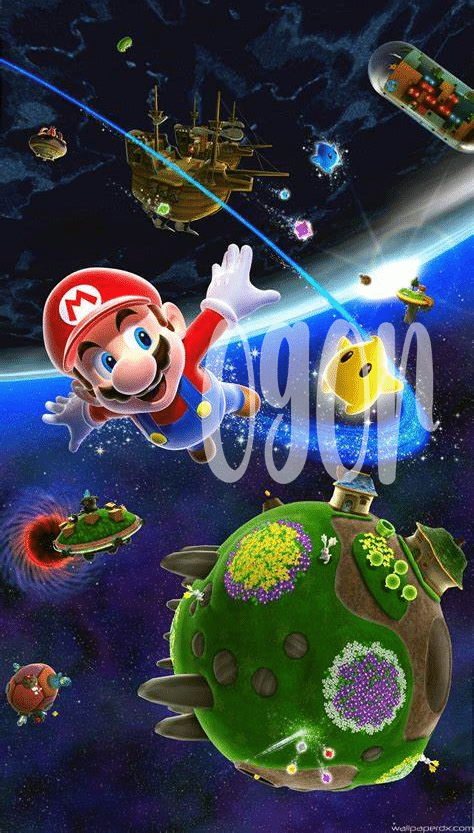The Evolution of Mario: from Consoles to Ios
Mario’s journey began with simple button-mashing on chunky controllers, guiding him through pixelated worlds on our TVs. Over time, though, this iconic plumber jumped from the static screens of our living rooms into the dynamic, ever-connected world of our smartphones. It’s a leap that not just transformed how we play with Mario, but also reshaped his adventures. Now, with a swipe or a tap, we’re spinning, jumping, and saving the princess in ways we never imagined. 🎮➡️📱
| Era | Platform | Key Milestone |
|———————|—————-|——————————————————————————-|
| The Classic Period | Console | Mario debuts in pixel-perfect glory, coins clinking in our living room. |
| The Modern Era | iOS | Mario dashes onto our phones, bringing a new world of gaming to our fingertips. |
Yet, not all who ventured into Mario’s new iOS realm were ready for the challenges ahead. Some, caught by FOMO, dove in without a second thought, while others, wary of becoming a bagholder in a world of digital purchases, approached with caution. Through it all, Mario’s evoluition exemplified not just the changing landscapes of gaming, but also a broader shift in how we interact with our favorite worlds. Gaming went from a dedicated pastime to an on-the-go experiEnce, accessible to all, yet distinctly challenging for those unprepared for the change.
Gameplay Experience: Touchscreen Vs. Controller
When Mario first made the leap from consoles to mobile devices, gamers had mixed feelings. Playing on a touchscreen meant saying goodbye to the physical buttons and joystick we’d all become so comfortable with. Instead of the familiar press and click, it was all about tapping and swiping. This change gefinitely had its perks for casual gaming on the go, allowing players to jump into Mario’s world anytime, anywhere. But for those used to the precision of a controller, it was a bit like trying to thread a needle while wearing boxing gloves – possible, but not ideal.
On the flip side, console gaming with Mario kept the spirit of the original gameplay alive for many. There’s something about holding a controller that feels like a direct link to the action on screen. It’s like comparing a phone call to a facetime; both connect you, but one definetely adds more depth to the exeriance. Plus, controllers have evolved to become more sophisticated over the years, adding new buttons and features that offer a richer way to play. Whether you’re a diamond hands gamer holding out for that pure console feel, or a FOMO-ridden adopter chasing Mario across platforms, the journey from button-mashing to screen-swiping is a fascinating evolution in the gaming saga.
Graphics Showdown: Pixel Art Vs. Hd Splendor
When it comes to Mario’s digital escapades, we’ve seen a huge shift from the retro vibe of pixel art to the eye-catching HD splendor that leaps off our screens today. It’s been quite the journey, watching our favorite plumber evolve visually. On one hand, console versions of Mario games have nurtured our nostalgia with their pixel art, reminiscent of the days spent in front of chunky televisions, fingers crossed for a successful level clear. This style, simple yet expressive, captures the essence of gaming’s golden age. 🕹️✨ On the flip side, iOS games catapult us into the modern era with their high-definition graphics that make every jump, stomp, and power-up a feast for the eyes. It’s like going from reading a beloved comic book to watching a blockbuster movie; both have their charm, but the latter just dazzles with its detail and vibrancy. 🎬😍 Sure, some might arguement that this HD splendor could overshadow the game’s core enjoyment, but when you’re soaring through levels with such clarity, it’s hard not to appreciate the upgrade. It sets a new standard for how we experiAnce Mario’s adventures, presenting a visual treat that appeals to both newcomers and seasoned fans. Deciding between the two is a bit like choosing between classic vanilla and a gourmet vanilla bean; it’s all about the flavor you’re craving at the moment.
Mario’s Adventures: Level Design and Variety
Jumping into the world of Mario, whether on your console or smartphone, always promises a vibrant blend of fun and challenge. Each platform paints Mario’s world in its own unique hues, carving paths that dazzle the eyes and tickle the brainstorms of both the hardcore “whale” gamers and those just comming in for a casual dive. Consoles offer a more traditional, side-scrolling experience, reminiscent of a childhood spent in front of a TV screen, controller in hand, mastering each level as if it were a rite of passage. Meanwhile, the iOS versions bring Mario into the palm of your hand, incorporating swipes and taps that turn each encounter into a high energy, finger gymnastics session. The levels themselves showcase a variety of scenic backdrops from fiery volcanoes to icy castles, ensuring that players, whether they have diamond hands or not, are consistently wowed. Not to forget, for those who love ipad monkey best app, there’s plenty of crossover appeal. Drifting from classic to cutting-edge, Mario’s adventures unite players across generations and platforms, proving that no matter how you play, the spirit of the game remains unchanged.
The Price of Playing: Free Vs. Paid Games
When you step into the world of Mario on your phone, the big question pops up: Do you need to spend your coins to have fun, or can you jump and run through these pixel worlds for free? On one hand, games on iOS might seem like a sweet deal because many of them don’t ask for a single penny upfront. It’s like finding a power-up without any effort. But, and there’s always a but, sometimes these free adventures come with a catch. You might find yourself hitting a wall where you can’t move forward unless you open your wallet. It’s a bit like being a Bagholder, holding onto hope that you can finish the game without spending, but the levels get tougher, and the temptation grows.
On the flip side, console games ask for your coins right at the beginning. You pay once, and then it’s all about the skill, no hidden traps. You know exactly what you’re getting into, like having Diamond Hands in a game of risk. Sure, it might seem pricey at first, but there’s a certain peace in knowing that your journey won’t be abruptly halted by a paywall. Below is a table that breaks down the main differences:
| Platform | Initial Cost | Additional Costs |
|---|---|---|
| iOS | Free/Low | Occassionally High (In-App Purchases) |
| Console | High | Minimal/None |
Choosing between free vs. paid is more than just about saving or spending money. It’s about what kind of gamer you are – do you want to dash through levels without worry, or are you up for the challenge of dodging those sneaky in-app purchases?
Community and Multiplayer: Social Gaming Differences
In the world of gaming, it’s fascinating how community vibes shift when you move from console to iOS platforms. On consoles, players often gather on couches, battling it out in Mario Kart or teaming up in Mario’s latest adventure. It’s about sharing laughs and snacks, feeling that buzz in the air. But jump over to iOS, and the scene changes. It’s more about players connecting from afar, sending gifts, or dropping into games together without ever sharing the same physical space. The magic here is in staying connected, whether you’re on a bus or taking a break at work.
And then there’s the competitive spirit. Console games bring out the diamond hands, those gamers who sit through the toughest challenges, yelling strategies across the room. iOS gamers, on the other hand, might lean more towards FOMO, jumping into games their friends are hyping up, not wanting to miss out on the fun. It’s a whole different ball game when your gaming buddy could be a thousand miles away, yet right there in the adventure with you. Want to take your gaming experience to the next level? Check out this macbook sleeper app for controlling your gaming environment without missing a beat. Whether you’re a solo adventurer or part of a global Mario squad, the way we play together is defintely changing 🌎👾🎉.





